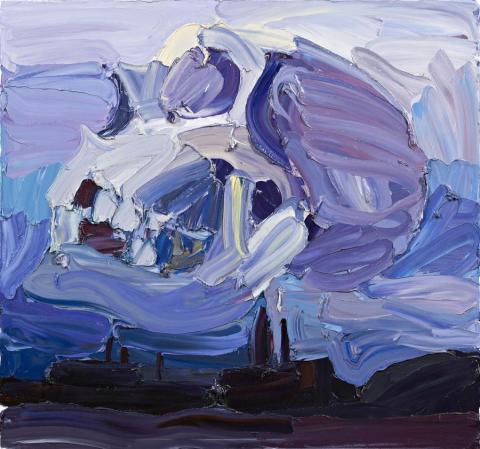PICNIC 3, 2006
BEN QUILTY
oil on linen
150.0 x 160.0 cm
signed, dated and titled verso: Picnic 3 2006 / Ben Quilty
Jan Murphy Gallery, Brisbane (label attached verso)
Derwent Collection, Tasmania
Private collection, Hobart
Jan Murphy Gallery at the Melbourne Art Fair, 2–6 August 2006
In the essay which originally accompanied the 2006 Melbourne Art Fair display, where this work was acquired, Rex Butler posited that Ben Quilty's works may be viewed through the post-modernist framework of the 'death of painting'. Certainly it was the case that painting, its purpose and relevance, was the subject of much argument at the time Quilty entered art school in the 1990s. The crisis, or crises, surrounding the nature or meaning of paint and painting had been rolling through the halls of academia for some time. Art historians such as T.J. Clark suggested that as early as Manet the 'dissonance' surrounding the act and activity of painting had already emerged.1 As Butler notes, 'It is a matter not so much of the end of painting as of its permanent ironising or self-questioning: painting henceforth about itself, reflecting upon itself, undermining itself from within. It is not the end of painting but rather its endlessness, guaranteed by the ceaseless meditation on its continued possibility.'2
In this context, Ben Quilty found himself forced to address the fundamental question of 'Why paint?' His examination of that question, of the intersection of the act, the subject and its place within the history of painting itself, has informed not only his choice of subject but also his use of the medium. This conflict of subject versus object in Quilty's practise was described by Butler as 'much of his (Quilty's) early work - continuing in a way up to the present - can be seen as about the "death of painting". His images of beautiful but now extinct parrots, no-longer-manufactured cars and skulls can all be understood as tropes for the absurdity, unfashionability, even disappearance of painting - all executed, of course, in the most luscious, virtuosic and painterly of styles.'3
1. Clark, T.J., Farewell to an Idea: Episodes from a History of Modernism, Yale University Press, United States of America, 1999
2. Butler, R., Painting After the End of Art, Jan Murphy Gallery, Brisbane
3. Ibid.
MERRYN SCHRIEVER
